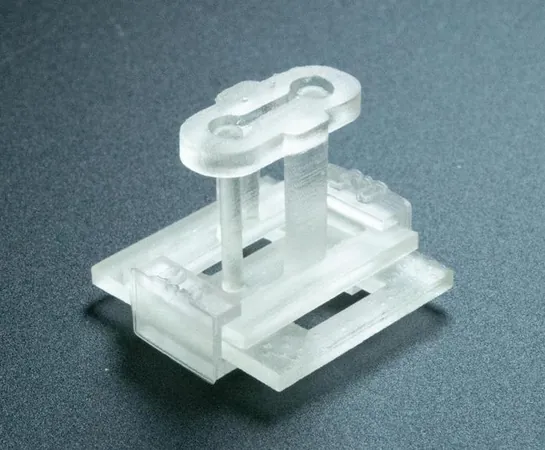
Revolutionizing Tissue Engineering: Meet the Game-Changing 3D Printed STOMP Device!
2025-05-26
Author: Jacques
Transforming Cell Environments with STOMP
In a groundbreaking advancement for tissue engineering, researchers at the University of Washington have unveiled the Suspended Tissue Open Microfluidic Patterning (STOMP) device, designed to mimic the natural habitats where cells flourish. This innovative tool promises to reshape how scientists approach human tissue modeling.
The Challenge of Replicating Natural Environments
Although impressive applications of 3D printing have emerged in industries like aerospace and healthcare, many pivotal advancements lie in the development of supporting tools. The challenge researchers face is reproducing the intricate environments in which cells typically grow—something that has proven difficult in laboratory settings. Traditional methods allow for the growth of individual tissues, like heart or lung cells, but fall short when it comes to understanding how different tissue types interact.
Introducing STOMP: A Breakthrough in Tissue Engineering
STOMP steps in as a transformative solution, enabling researchers to explore how cells respond to various mechanical and physical cues in defined areas of suspended tissue. Compact enough to fit on a fingertip, STOMP is crafted using SolidWorks and 3D printed with Formlabs' advanced clear resin, utilizing the Form 3B+ printer.
Creating Realistic Biological Interfaces
This remarkable device is not just a technological feat; it replicates essential biological interfaces—such as the connections between bones and ligaments or between healthy and fibrotic heart tissues. STOMP connects to a two-post system and contains an open microfluidic channel that precisely controls the spatial arrangement and composition of various cell types, thereby facilitating the creation of complex tissue structures.
Innovating with Capillary Action and Degradable Hydrogels
Designed to amplify a technique called casting, which involves combining living cells with synthetic materials in a mold, STOMP harnesses capillary action to arrange different cell types in specific patterns. Additionally, it features degradable hydrogel walls that can be dissolved without harming the delicate tissue structures, offering an unprecedented level of control.
Real-World Applications: Testing STOMP's Capabilities
The efficacy of STOMP has already been demonstrated in two significant experiments: one analyzing the contractile behaviors of healthy versus diseased engineered heart tissues, and another simulating the ligament attaching a tooth to its socket. Professor Nate Sniadecki noted the versatility this device brings compared to traditional methods, allowing scientists to overcome previous limitations.
A Collaborative Breakthrough in Science
As Professor Asleigh Theberge remarked, this innovative method opens exciting new avenues for both tissue engineering and cell signaling research. It's a prime example of how interdisciplinary collaboration can lead to remarkable scientific breakthroughs, paving the way for future explorations in the field.









 Brasil (PT)
Brasil (PT)
 Canada (EN)
Canada (EN)
 Chile (ES)
Chile (ES)
 Česko (CS)
Česko (CS)
 대한민국 (KO)
대한민국 (KO)
 España (ES)
España (ES)
 France (FR)
France (FR)
 Hong Kong (EN)
Hong Kong (EN)
 Italia (IT)
Italia (IT)
 日本 (JA)
日本 (JA)
 Magyarország (HU)
Magyarország (HU)
 Norge (NO)
Norge (NO)
 Polska (PL)
Polska (PL)
 Schweiz (DE)
Schweiz (DE)
 Singapore (EN)
Singapore (EN)
 Sverige (SV)
Sverige (SV)
 Suomi (FI)
Suomi (FI)
 Türkiye (TR)
Türkiye (TR)
 الإمارات العربية المتحدة (AR)
الإمارات العربية المتحدة (AR)